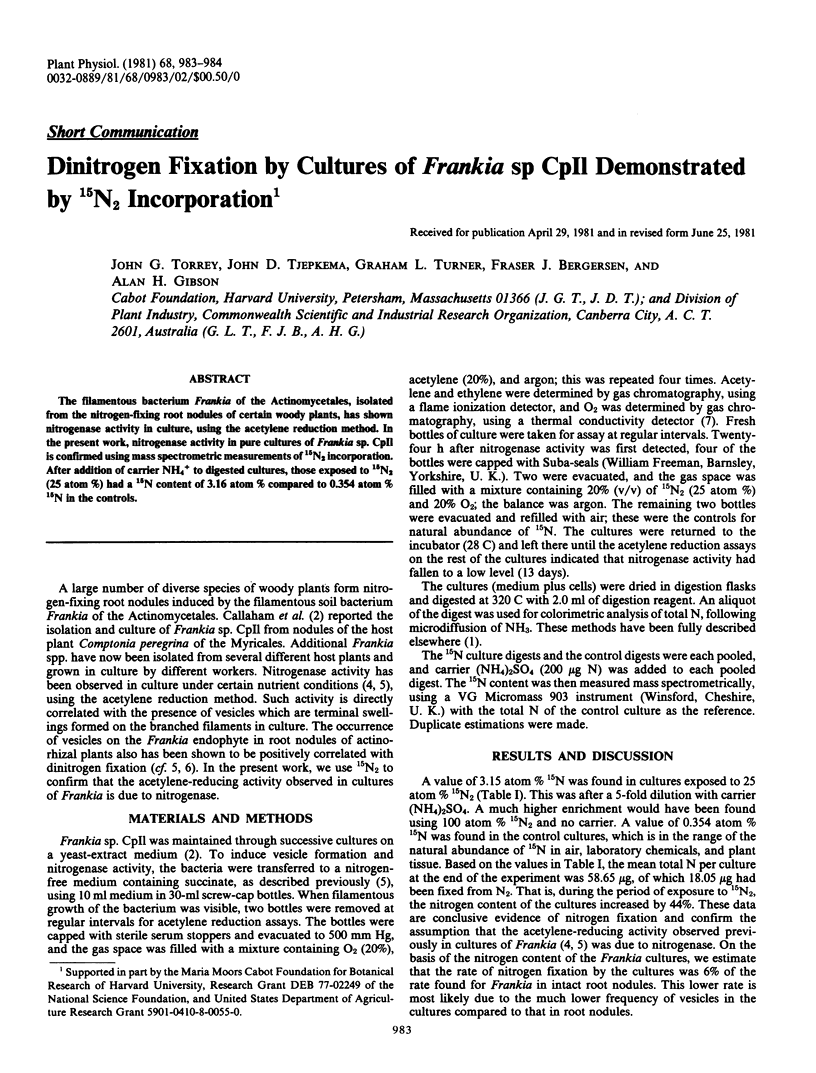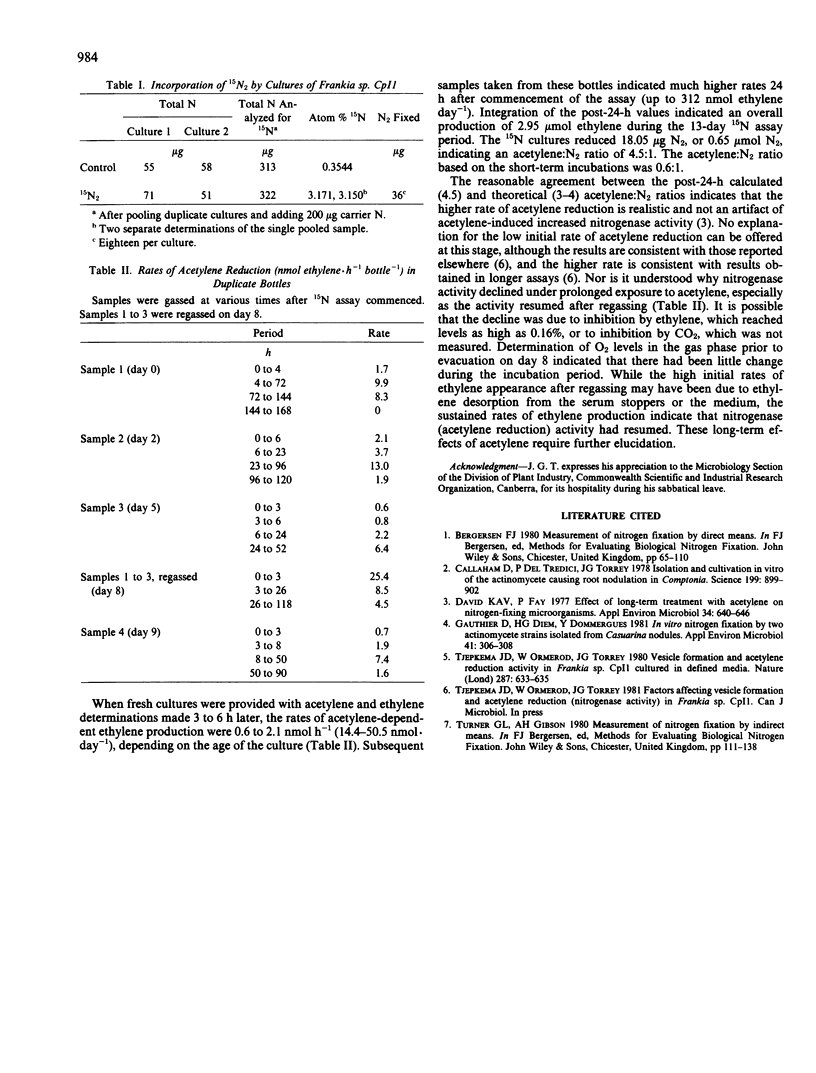Abstract
The filamentous bacterium Frankia of the Actinomycetales, isolated from the nitrogen-fixing root nodules of certain woody plants, has shown nitrogenase activity in culture, using the acetylene reduction method. In the present work, nitrogenase activity in pure cultures of Frankia sp. CpIl is confirmed using mass spectrometric measurements of 15N2 incorporation. After addition of carrier NH4+ to digested cultures, those exposed to 15N2 (25 atom%) had a 15N content of 3.16 atom% compared to 0.354 atom% 15N in the controls.
Full text
PDF

Selected References
These references are in PubMed. This may not be the complete list of references from this article.
- Callaham D., Deltredici P., Torrey J. G. Isolation and Cultivation in vitro of the Actinomycete Causing Root Nodulation in Comptonia. Science. 1978 Feb 24;199(4331):899–902. doi: 10.1126/science.199.4331.899. [DOI] [PubMed] [Google Scholar]
- David K. A., Fay P. Effects of long-term treatment with acetylene on nitrogen-fixing microorganisms. Appl Environ Microbiol. 1977 Dec;34(6):640–646. doi: 10.1128/aem.34.6.640-646.1977. [DOI] [PMC free article] [PubMed] [Google Scholar]
- Gauthier D., Diem H. G., Dommergues Y. In vitro nitrogen fixation by two actinomycete strains isolated from casuarina nodules. Appl Environ Microbiol. 1981 Jan;41(1):306–308. doi: 10.1128/aem.41.1.306-308.1981. [DOI] [PMC free article] [PubMed] [Google Scholar]


